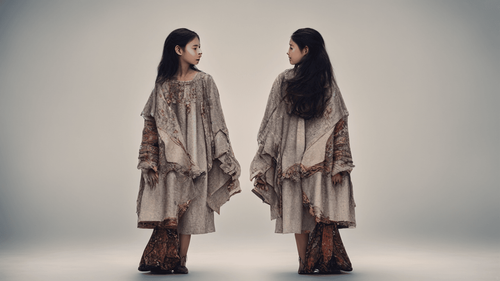
Introduction: Unleashing the Power of AI to Create Images from Text
In the ever-evolving landscape of artificial intelligence, a remarkable breakthrough has emerged - the ability of AI to create images from text. Imagine a world where descriptive language becomes a gateway to captivating visuals, bridging the gap between imagination and reality. In this article, we delve into the fascinating realm of AI-powered image generation from textual input. From the underlying mechanisms to its real-world applications, join us on a journey through the transformative capabilities of AI.
Understanding AI to Create Images from Text
Decoding the Mechanism: How AI Transforms Text into Images
AI, short for Artificial Intelligence, is a field that seeks to replicate human cognitive processes using machines. One of its latest marvels is the capacity to generate images based on textual descriptions. Through advanced algorithms and deep learning, AI analyzes the semantic context of text and translates it into visual representations. This process involves intricate layers of neural networks, pattern recognition, and image synthesis, enabling the transformation of abstract ideas into concrete visuals.
AI's Creative Canvas: From Words to Visual Wonders
The process of harnessing AI to create images from text involves multiple stages. It begins with data preprocessing, where textual input undergoes linguistic analysis to extract key features and concepts. Next, these features are mapped to corresponding visual elements, such as shapes, colors, and objects. AI models then use this mapping to generate images that align with the original text. The result is a harmonious fusion of language and art, made possible by the ingenuity of AI algorithms.
Applications of AI-Generated Images
Revolutionizing Visual Storytelling and Content Creation
In the realm of marketing and entertainment, AI's image generation capabilities are rewriting the rules of visual storytelling. Content creators and advertisers can now breathe life into their narratives by providing AI with textual descriptions, which are then transformed into stunning visuals. This dynamic approach opens doors to unprecedented creativity, enabling brands to connect with audiences on a deeper, more immersive level.
Architectural Visualization: Envisioning Spaces with Precision
Architects and designers find a powerful ally in AI-generated images. By describing architectural concepts in text, professionals can witness their ideas materialize into intricate visual representations. This technology not only accelerates the design process but also enhances communication between stakeholders, as complex blueprints are translated into vivid images that capture every detail.
Educational Enhancement: Illuminating Learning with Imagery
The realm of education embraces AI's image creation prowess to foster enriched learning experiences. Textbooks and educational materials can be brought to life through visual depictions of historical events, scientific phenomena, and complex theories. This visual-linguistic synergy empowers students to grasp concepts with greater clarity, making learning a truly immersive adventure.
Benefits and Implications of AI-Generated Images
Unleashing Creativity: A Collaborative Dance of Mind and Machine
AI's ability to generate images from text marks a monumental shift in creative expression. Artists, writers, and creators of all kinds can collaborate with AI to manifest their ideas. By providing descriptive prompts, creators can witness their vision interpreted in multiple visual styles, fostering a harmonious co-creation between human imagination and AI ingenuity.
Accelerating Innovation: Redefining Prototyping and Design Iterations
The world of product design and prototyping is propelled forward by AI-generated images. Engineers and innovators can rapidly visualize concepts and prototypes by describing them in text. This expedites the iterative design process, enabling quicker iterations and informed decision-making, ultimately leading to more refined and innovative end products.
Ethical Considerations: Navigating the Boundaries of Authenticity
While AI-generated images hold immense potential, ethical considerations arise. The fine line between originality and replication challenges us to discern the authenticity of AI-created visuals. As AI blurs the boundaries between human and machine creativity, society must engage in thoughtful discourse to define attribution, copyright, and the unique value of human-generated artistry.
FAQs: Demystifying AI-Generated Images
How does AI create images from text?
AI employs intricate neural networks and deep learning algorithms to analyze textual descriptions, extracting semantic meaning and translating it into visual elements, resulting in stunning images.
Can AI-generated images replace human creativity?
AI-generated images complement human creativity by offering new perspectives and interpretations. They can aid in ideation and collaboration, but the essence of human artistic expression remains unparalleled.
What industries benefit most from AI-generated images?
AI-generated images find applications in marketing, architecture, education, design, and entertainment, revolutionizing how visuals are conceptualized and communicated.
Are AI-generated images always accurate representations of text?
While AI strives for accuracy, interpretations may vary. AI-generated images capture the essence of text, but individual nuances and interpretations can influence the final visual output.
How can ethical concerns surrounding AI-generated images be addressed?
Ethical considerations require a collaborative effort among creators, AI developers, and society. Establishing clear guidelines, attribution systems, and promoting dialogue is crucial in navigating these challenges.
What is the future of AI-powered image generation?
The future holds exciting possibilities as AI continues to advance. Enhanced algorithms, seamless human-AI collaboration, and expanded creative applications await, shaping a new era of visual innovation.
Conclusion: Pioneering the Fusion of Language and Imagination
The advent of AI to create images from text is a testament to human ingenuity and technological progress. This groundbreaking capability ushers in a new era of creative exploration, where language becomes a brushstroke of inspiration, and AI acts as the canvas that transforms thought into tangible art. As we embark on this transformative journey, let us embrace the symbiotic relationship between AI and human expression, unlocking a world where imagination knows no bounds.
Disclaimer: This article is intended for informational purposes only. The views and opinions expressed herein are those of the author and do not necessarily reflect the official policy or position of Picasso AI.